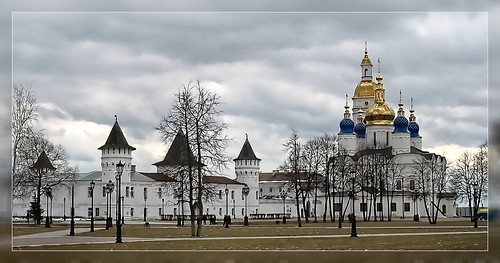
If you’re wondering how to learn Russian, a good place to start is by learning a little about the culture in which it originated. Russia has a complex history and a very rich culture which can offer new insight to people of the Western world. The country abounds with art and music, a delectable cuisine, intriguing customs and a colorful history of folk art.
Customs and Tradition
Like many Europeans, Russians greet by shaking hands and
exchanging a few words of greeting. In public full names and titles are used
when introducing one another. It is considered most impolite to talk to another
person with your hands in your pockets; it is also rude to point your finger at
another.
Russian Hospitality
Learning about Russian customs and traditions is an excellent
way to improve your use of the Russian language. One thing that Russian people
are noted for above all is their hospitality. When you are staying in Russia,
you don’t need an excuse to go and visit friends or neighbors, nor do you have
to wait for a special invitation. However, it is considered impolite to receive
guests without offering them a drink or something to eat. On festive occasions
such as Easter, New Year and birthdays, Russians enjoy serving a special meal
for friends and family. Holidays dinners usually include a selection of cold
meats and a hot meal followed by deserts. Various types of alcoholic beverages
are served together so that guests may choose their beverage of choice.
Dining in Russia
Because of Russia’s location in Europe, many areas have a
cold climate, often with severe winters. For this reason, many traditional
Russian dishes are designed to provide warmth and energy. Most food is
home-cooked and meals are usually served three times each day. Breakfast is
usually eaten around 7 a.m. before leaving for work. A typical breakfast
consists of butterbrots – an
open sandwich topped with butter or ham, boiled eggs and tvorog – a dish
similar to cottage cheese, or cereal. Coffee or tea is also served.
Lunch is the main meal in Russia, and is usually served
between 1 p.m. and 3 p.m. During the work day, the lunch break usually lasts
for one hour. A traditional Russian lunch consists of borscht –hot beet soup- for the first course, followed by meat
served with potatoes or porridge. This is followed by kompot – a non-alcoholic beverage made by boiling
fruit in water.
Dinner is served around 7 – 8 p.m. and is often the only
meal for which the Russian family can sit down together. A typical dinner
consists of one or two appetizers followed by a hot main course with meat or
fish and potatoes. Bread is always served and dinner is followed by tea and
jam.
Traditional Russian
Gifts
If you are visiting Russia and you would like to bring home
gifts from friends and family, a classic gift is a set of Russian nest dolls or
matryoshka. The wooden dolls fit inside each other and usually come in sets of
six or seven dolls of decreasing size. The dolls were traditionally made from
birch or linden and took considerable skill to make. Though the dolls are now
factory-made, in the past they would involve the participation of the whole family.
Matryoshka dolls may be painted with many different designs including peasant
girls, men and even Russian presidents.
Sources
No comments:
Post a Comment